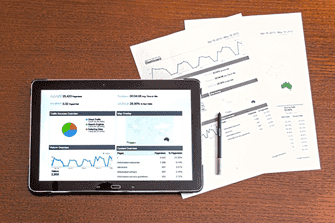Introduction to Preeclampsia and Remote Populations
Overview of preeclampsia: definition, symptoms, and risks
Preeclampsia is a hypertensive disorder that affects pregnant women, typically occurring after the 20th week of pregnancy. It is characterized by elevated blood pressure, protein in the urine, and in some cases, damage to vital organs such as the liver and kidneys. Symptoms include sudden weight gain, severe headaches, and changes in vision. Preeclampsia can lead to complications for both the mother and the baby, including premature birth, low birth weight, and increased risk of future cardiovascular disease. In severe cases, it can result in maternal mortality and adverse pregnancy outcomes.
Importance of managing preeclampsia in remote populations
Effective management of preeclampsia is essential to ensure the health and well-being of pregnant women and their babies. For remote populations, access to healthcare services may be limited, making it crucial to implement best practices in remote population management for preeclampsia. This includes timely diagnosis, monitoring of blood pressure, and appropriate interventions to prevent complications. In addition, patient education and support are vital in helping pregnant women understand the importance of prenatal care and the warning signs of preeclampsia. By addressing the unique challenges faced by remote populations, healthcare providers can improve maternal health and reduce pregnancy-related mortality in these communities.
Challenges faced in providing healthcare services to remote areas
There are several challenges in providing healthcare services to remote areas, particularly in the context of managing preeclampsia. These include:
- Limited access to healthcare facilities: Pregnant women in remote areas may have to travel long distances to reach a healthcare facility, which can delay diagnosis and treatment of preeclampsia. Telemedicine and remote blood pressure monitoring can help bridge this gap by allowing healthcare providers to monitor pregnant patients from a distance.
- Lack of trained healthcare professionals: Remote areas often have a shortage of healthcare professionals with expertise in managing preeclampsia. Training community health workers and local midwives in the identification of risk factors and early symptoms of preeclampsia can help address this challenge.
- Limited resources for diagnosis and treatment: Remote healthcare facilities may not have the necessary equipment and resources for diagnosing and treating preeclampsia. Low-cost, portable diagnostic tools, such as home blood pressure monitoring devices, can help overcome this barrier.
- Cultural and linguistic barriers: Healthcare providers need to be culturally sensitive and provide patient education in a language that is accessible to pregnant women in remote areas. This helps ensure that they understand the importance of prenatal care and are aware of the warning signs of preeclampsia.
By addressing these challenges and implementing best practices in remote population management for preeclampsia, healthcare providers can make a significant impact on the health outcomes of pregnant women and their babies in remote areas.
Identifying and Assessing Preeclampsia in Remote Settings
Training community health workers and local midwives to recognize symptoms
In order to effectively manage preeclampsia in remote populations, it is crucial to train community health workers and local midwives to recognize the symptoms and risk factors of this hypertensive disorder. This includes understanding the warning signs, such as elevated blood pressure, sudden weight gain, and severe headaches. By equipping these frontline healthcare providers with the necessary knowledge and skills, they can facilitate early diagnosis and treatment, thereby improving maternal health outcomes in remote areas. Educational programs, such as training workshops, can be an effective way to enhance the capabilities of community health workers and midwives in managing preeclampsia.
Utilizing telemedicine for remote consultations and diagnosis
Telemedicine has the potential to revolutionize the way healthcare services are delivered to remote populations. By enabling remote consultations and diagnosis, telemedicine can help bridge the gap between patients and healthcare providers. In the context of preeclampsia, this technology allows for continuous monitoring of blood pressure and other vital signs, as well as timely intervention in case of any complications. In addition, telemedicine can facilitate patient education by providing pregnant women with access to healthcare professionals who can answer their questions and address their concerns. Remote patient monitoring can significantly enhance the quality of care for pregnant women in remote areas, ensuring that they receive timely and appropriate management for preeclampsia.
Implementing low-cost, portable diagnostic tools for blood pressure and urine tests
In remote settings, access to sophisticated medical equipment and resources may be limited. As such, it is essential to implement low-cost, portable diagnostic tools that can facilitate the early detection and monitoring of preeclampsia. Home blood pressure monitoring devices, such as digital blood pressure monitors, can be an effective solution for tracking blood pressure changes in pregnant women. These devices are relatively inexpensive and easy to use, making them suitable for use in remote areas.
Similarly, urine tests can help detect the presence of protein, which is indicative of preeclampsia. Low-cost urine test strips can be distributed to pregnant women in remote areas, allowing them to self-monitor their condition and seek medical assistance when necessary. By providing these diagnostic tools, healthcare providers can empower pregnant women in remote areas to take control of their health and improve the overall management of preeclampsia.
Implementing best practices in remote population management for preeclampsia, such as training community health workers and local midwives, utilizing telemedicine, and providing low-cost diagnostic tools, can significantly improve maternal health outcomes in remote areas. By addressing the unique challenges faced by these populations, healthcare providers can ensure that pregnant women receive timely and appropriate care, thereby reducing the risk of complications and pregnancy-related mortality.
Establishing Effective Communication and Collaboration
Creating a network of healthcare professionals, community health workers, and patients
In order to optimize the management of preeclampsia in remote populations, it is essential to establish a robust network of healthcare professionals, community health workers, and patients. This collaborative approach ensures that pregnant women receive comprehensive care throughout their pregnancy, reducing the risk of complications and adverse pregnancy outcomes. By connecting all stakeholders involved in the care of pregnant women, healthcare providers can promote a coordinated response to preeclampsia, ensuring that patients receive timely interventions and support.
Leveraging mobile technology for timely communication and data sharing
Mobile technology can play a significant role in enhancing communication and collaboration among healthcare professionals, community health workers, and patients. The widespread availability of smartphones and mobile devices enables the use of apps and platforms for remote patient monitoring and data sharing, facilitating timely interventions and improved management of preeclampsia. For instance, mobile apps can be used to track blood pressure measurements, monitor fetal growth, and provide patient education resources, ensuring that pregnant women have access to the information and support they need to manage their condition effectively.
In addition, mobile technology can facilitate real-time communication between healthcare professionals and patients, allowing for prompt responses to any concerns or changes in the patient’s condition. This is particularly important in remote areas, where access to healthcare services may be limited. By leveraging mobile technology, healthcare providers can ensure that pregnant women receive timely and appropriate care, regardless of their geographical location.
Ensuring cultural competency and linguistic accessibility
Cultural competency and linguistic accessibility are critical aspects of providing effective healthcare services in remote populations. Healthcare professionals must be sensitive to the cultural and linguistic needs of their patients, ensuring that they can communicate effectively and provide care in a manner that respects the patient’s values, beliefs, and preferences. This can be achieved through cultural competency training for healthcare professionals, as well as the provision of translation and interpretation services for patients with limited English proficiency.
In the context of preeclampsia management, cultural competency and linguistic accessibility are particularly important, as these factors can influence the patient’s willingness to engage with healthcare providers and adhere to recommended treatments. By addressing these barriers to care, healthcare providers can ensure that pregnant women receive the support they need to manage their condition effectively, reducing the risk of complications and improving overall maternal health outcomes.
In conclusion, establishing effective communication and collaboration is crucial for the successful management of preeclampsia in remote populations. By creating a network of healthcare professionals, community health workers, and patients, leveraging mobile technology, and ensuring cultural competency and linguistic accessibility, healthcare providers can optimize the care of pregnant women and reduce the risk of complications associated with this hypertensive disorder. Implementing these best practices can significantly improve maternal health outcomes and contribute to the overall well-being of remote populations.
Implementing Preventative Measures and Early Interventions
Educating pregnant women about preeclampsia risks and preventive measures
Patient education plays a crucial role in the prevention and early management of preeclampsia, particularly in remote populations. By providing pregnant women with information about the risk factors, signs, and symptoms of preeclampsia, healthcare providers can empower patients to take an active role in their own care, leading to better outcomes. Education should cover topics such as blood pressure monitoring, recognizing the signs of worsening hypertension, and understanding the importance of prenatal care. By increasing awareness and understanding of preeclampsia, healthcare providers can help to reduce the risk of complications and improve maternal health outcomes.
Encouraging prenatal care and regular monitoring of blood pressure and urine tests
Regular prenatal care and monitoring of blood pressure and urine tests are essential for the early detection and management of preeclampsia. Healthcare providers should encourage pregnant women to attend regular prenatal appointments, where they can receive vital assessments such as blood pressure measurements and urine tests to screen for proteinuria. In remote populations, this may involve leveraging telemedicine and remote blood pressure monitoring technologies to ensure that pregnant women have access to regular assessments, even in areas with limited healthcare resources.
Providing access to appropriate nutrition, supplements, and medications
Proper nutrition, supplements, and medications are essential components of preeclampsia prevention and management. Healthcare providers should ensure that pregnant women in remote populations have access to the necessary resources to support their health and well-being during pregnancy. This includes providing information about appropriate dietary practices, such as reducing salt intake and maintaining a balanced diet, as well as access to essential supplements such as calcium and vitamin D.
In some cases, healthcare providers may recommend the use of medications to help prevent or manage preeclampsia. For example, low-dose aspirin has been shown to reduce the risk of preeclampsia in high-risk pregnancies when started early in pregnancy. In more severe cases, providers may recommend the use of medications such as magnesium sulfate to prevent seizures or other complications associated with severe preeclampsia. By ensuring that pregnant women have access to appropriate nutrition, supplements, and medications, healthcare providers can help to reduce the risk of preeclampsia and its associated complications.
In conclusion, implementing preventative measures and early interventions is a crucial aspect of managing preeclampsia in remote populations. By educating pregnant women about the risks and preventive measures associated with preeclampsia, encouraging regular prenatal care and monitoring, and providing access to appropriate nutrition, supplements, and medications, healthcare providers can help to reduce the risk of complications and improve maternal health outcomes. These best practices in remote population management for preeclampsia can contribute to the overall well-being of pregnant women and their families, regardless of their geographical location.
Managing Preeclampsia Cases in Remote Populations
Developing remote treatment protocols and monitoring plans
To effectively manage preeclampsia in remote populations, healthcare providers must develop remote treatment protocols and monitoring plans that account for the unique challenges faced in these settings. This includes establishing guidelines for the use of medications, such as low-dose aspirin or magnesium sulfate, as well as protocols for remote blood pressure monitoring and patient follow-up. By creating standardized treatment and monitoring plans that can be easily implemented by community health workers and local healthcare providers, patients can receive consistent and timely care, even in remote locations.
Coordinating with regional healthcare facilities for severe cases and emergencies
In cases of severe preeclampsia or emergencies, it is essential for healthcare providers in remote areas to coordinate with regional healthcare facilities to ensure that patients receive the necessary care. This may involve arranging for the transport of patients to facilities with more advanced resources or coordinating with specialists at regional hospitals via telemedicine consultations. By establishing strong lines of communication and collaboration between local and regional healthcare providers, patients with severe preeclampsia can receive prompt and appropriate care, reducing the risk of complications and improving maternal and fetal health outcomes.
Ensuring continuity of care and follow-up through telemedicine and community health workers
Continuity of care and follow-up are crucial aspects of managing preeclampsia in remote populations. Telemedicine can play a key role in facilitating this process by enabling healthcare providers to conduct remote consultations and monitor patients’ progress without the need for in-person appointments. This is particularly important in remote areas where access to healthcare resources may be limited, as it allows patients to receive ongoing care and support from healthcare professionals.
In addition to telemedicine, community health workers and local midwives can play a vital role in ensuring continuity of care and follow-up for patients with preeclampsia. By providing support and education at the community level, these healthcare workers can help to bridge the gap between patients and more specialized care, ensuring that patients receive the necessary care and follow-up to manage their condition effectively.
In conclusion, managing preeclampsia cases in remote populations requires a multifaceted approach that includes developing remote treatment protocols and monitoring plans, coordinating with regional healthcare facilities for severe cases and emergencies, and ensuring continuity of care and follow-up through telemedicine and community health workers. By implementing these best practices in remote population management for preeclampsia, healthcare providers can help to reduce the risk of complications and improve maternal health outcomes, even in areas with limited access to healthcare resources.
Monitoring and Evaluating Remote Preeclampsia Management Programs
Establishing key performance indicators and data collection methods
Effective monitoring and evaluation of remote preeclampsia management programs are essential to ensure their success and inform future interventions. To begin, it is crucial to establish key performance indicators (KPIs) that accurately measure program performance, such as the number of pregnant women screened for preeclampsia, the proportion of women receiving appropriate treatment, and maternal and fetal health outcomes. These KPIs should be based on best practices in remote population management for preeclampsia and reflect the program’s specific goals and objectives.
Once KPIs have been established, data collection methods must be developed to track program performance effectively. This may involve the use of electronic health records, remote patient monitoring devices, and mobile technology to collect and store patient data. Data collection methods should be designed to minimize the burden on healthcare providers and patients while ensuring accurate and timely data capture.
Analyzing program outcomes and identifying areas for improvement
After collecting data on program performance, it is essential to analyze the outcomes to identify areas for improvement. This may involve examining trends in blood pressure measurements, rates of hypertensive disorders, and maternal and fetal health outcomes to determine the program’s effectiveness. By analyzing program outcomes, healthcare providers can identify potential gaps in care or areas where interventions may need to be adapted or expanded.
In addition to analyzing program outcomes, it is essential to gather feedback from healthcare providers, community health workers, and patients to gain insight into their experiences with the program. This feedback can provide valuable information about the program’s strengths and weaknesses and help to inform future improvements.
Sharing best practices and lessons learned to inform future interventions and strategies
Sharing best practices and lessons learned from remote preeclampsia management programs is critical to informing future interventions and strategies. By disseminating program results and insights, healthcare providers can contribute to the development of evidence-based guidelines for managing preeclampsia in remote settings. This can be achieved through the publication of program results in peer-reviewed journals, presenting findings at conferences, or sharing experiences through online platforms and social media.
Additionally, collaboration between different programs and organizations can help to identify and disseminate best practices more efficiently. By working together, healthcare providers can share resources, knowledge, and expertise to improve the management of preeclampsia in remote populations.
In conclusion, monitoring and evaluating remote preeclampsia management programs is essential to ensuring their effectiveness and informing future interventions. Establishing KPIs and data collection methods, analyzing program outcomes, and sharing best practices and lessons learned can help healthcare providers to continuously improve their programs and contribute to the development of evidence-based strategies for managing preeclampsia in remote settings.








